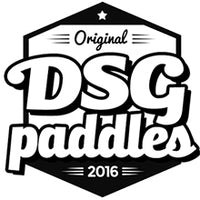DSG or Direct Shift Gearboxes are increasingly common in modern European cars. Most utilising a paddle shift component on the steering column, behind the wheel. Paddles can combine with several different gearbox types to help simulate a manual shifting experience and sometimes even outperform a manual or traditional automatic transmission, with smoother gear changes.
- Torque converters vs. dual-clutch designs
Generally, there are two standard automatic transmission designs available in the market. Automatics geared up with torque converters will be the most well-known. They take advantage of a fluid coupling amongst the engine in addition to transmission itself, transferring power through the torque converter’s substance to spin the gearbox and send capacity to the drive wheels. Dual-clutch designs endure another type of tack, utilizing combined internal clutches that can engage/disengage once it is the time for your shift.
- How do paddle shifters work
Cars fitted with paddle shifters have a different type of steering wheel than cars without. They have two short stalks on either side of the wheel. The left paddle when pulled back will take the gears down and the right when pulled back will take the gears up. This gear change will reflect on the dashboard with a gear number indicator. Once the paddle is used and the gear changed a system of pneumatics and actuators change the gear in the direct shift gearbox.
Paddle shifters allow the driver to electronically shift their vehicles, much like a semi-automatic gearbox. Rather than the traditional clutch pedal and gear-shift lever on a manual transmission.
The automatic transmission will change gears on its own if the paddles are not touched.
- Not every paddle shifter executes in the same way
The vast majority of torque converter paddle shifts will not be measurably speedier as opposed to those fashioned with a standard manual gearbox, even though there are a handful of high-performance exceptions which can be accommodate the limit of switching ratios rapidly, like the ZF gearbox currently employed by BMW, Jaguar and several other premium brands.
Dual-clutch designs are another type of story, however, as it is easy for the transmission to pre-select the second gear using the second clutch predicated on vehicle behaviour.
Due to the fact the clutch had been engaged, switching from 1 gear to an increased is ultra-quick, leading to a faster performance in almost every driving situation. Dual-clutch designs are a lot more rapid in automatic mode, however the direct character among these paddle shifters has made them popular in modifiers.
How Paddle Shifters Extensions are installed
- Align your new paddles over your stock paddles to confirm fitment first.
- If they fit, clean the surface of your stock paddles.
- Peel back the 3M double-sided tape off your new paddles.
- Align and hold down firmly for 30 seconds.
- Repeat for other side.
You can watch the video here.
For more information on paddle shifters, chat with a knowledgeable expert at Original DSG Paddles. All of our paddle shift extensions are made of high quality materials and designed to improve your driving experience. There is no obnoxious branding on any of our products so you'll be sure they will beautifully match the interior of your Volkswagen or Audi. We package and ship our products worldwide from our office here in Australia. If you are unsure whether our paddles will fit your car or have any other concerns, please do not hesitate to contact us.
